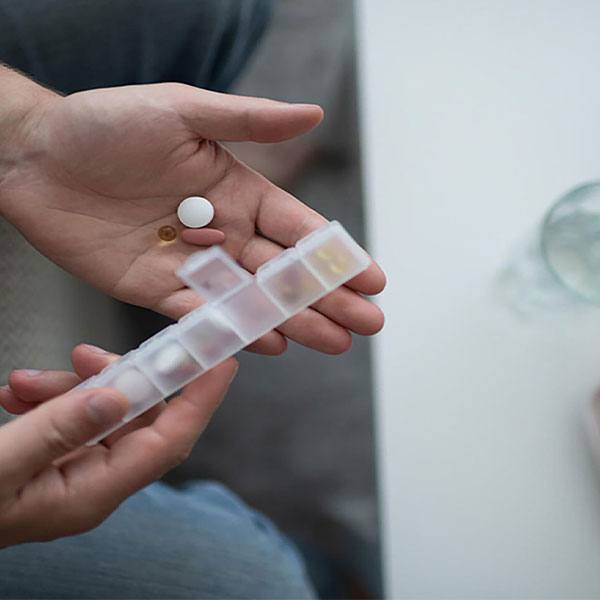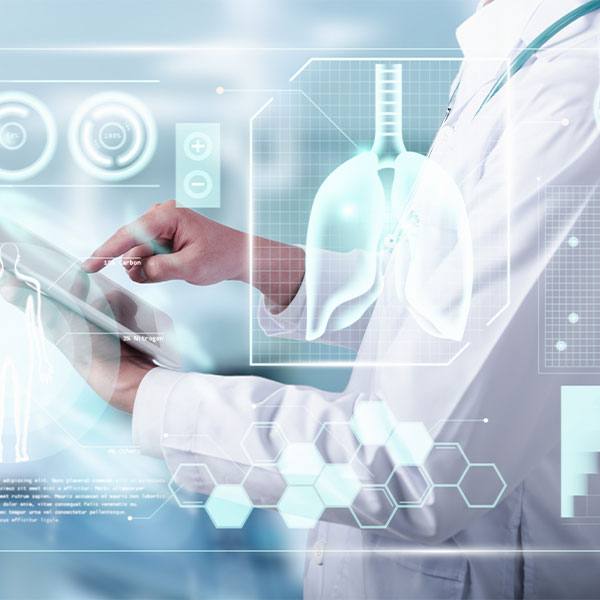-
AI and Digital Health
Science Saturday: Mayo researchers lay foundation for AI-based personalized cancer modeling
Like the maps that drivers use to get from one place to another, the goal of a medical diagnosis is to get you from where you are to where you want to be. A diagnosis takes a patient from symptoms to treatment, such as from lump to cure in the case of breast cancer.
Medical "road maps" are built from painstakingly selected patient data that clarify risk factors, like a BRCA mutation for breast cancer, or suggest treatment based on a tumor's characteristics or phenotype. Those data save lives. It's a diagnostic superhighway for many people. But Mayo Clinic researchers wondered if there was more to learn from those data.
"The astounding genetic and phenotypic variation in cancer is well-known; yet, almost all research and clinical practice focuses on cohorts of patients where risk factors are averaged together," explains Hu Li, Ph.D., a Mayo Clinic systems pharmacologist and senior author on a new paper in Genome Research.
Dr. Li brought together a team of experts to explore data pooled from 90 patients with breast cancer to see how deeply these data could be mined. Together, the patients had a diverse assortment of mutations linked to disease.

"We found that shockingly the cohort representations can leave out close to 50% of individual patient biology. This is a huge amount of untapped potential for individualized disease understanding and for new precision therapeutics," he says.
The researchers incorporated a statistical technique known as probabilistic modeling to account for the impact of random events or actions in predicting the potential occurrence to find real disease activity. Then they grouped the resulting gene map into a disease network for each patient. That allowed the researchers to rank the relative importance of gene variants and subsequent proteins that were fueling the cancer. The same gene can have significantly different importance in one person versus another. With this patient-specific gene road map in hand, they were able to explore drug synergy for each patient.
"Even for patients in the same breast cancer subtypes, there were unique combinations of genes driving their disease and unique targeted therapies that were identified as impactful by our method," says Taylor Weiskittel, a physician-scientist in training in the Mayo Clinic M.D.-Ph.D. Program and a first author on the paper. "This really suggests that we can greatly benefit from individualized medicine in broader research and clinical communities."
The team's goal is to help a clinician better understand a patient's disease drivers and use that knowledge to help clarify therapeutic options. The tool used in this effort is named PERMUTOR, which stands for personalized mutation evaluator. It operates as the groundwork for a potential artificial intelligence (AI) platform that could allow the concept to be widely used.

"To have successful and reliable artificial intelligence algorithms, you need high-value inputs that encode meaningful biological information about patient disease. PERMUTOR can provide such inputs to feed artificial intelligence platform," says Dr. Li.
Next up, the team is working to increase PERMUTOR's performance and investigate it use for a wider array of diseases and therapeutic targets. Dr. Li says the PERMUTOR algorithm is years away from use in the clinic, but it is a first step toward the next generation of cancer diagnostic and treatment tools.
In addition to Dr. Li and Weiskittel, authors ― all from Mayo ― are Choong Ung, Ph.D.; Cristina Correia, Ph.D.; and Cheng Zhang, Ph.D. Funding for this work was provided by the National Institutes of Health, Mayo Clinic's Center for Biomedical Discovery, Mayo Clinic Cancer Center, Mayo Clinic's Center for Individualized Medicine and others.
A complete list of funding information and disclosures is in Genome Research.
Related Articles







